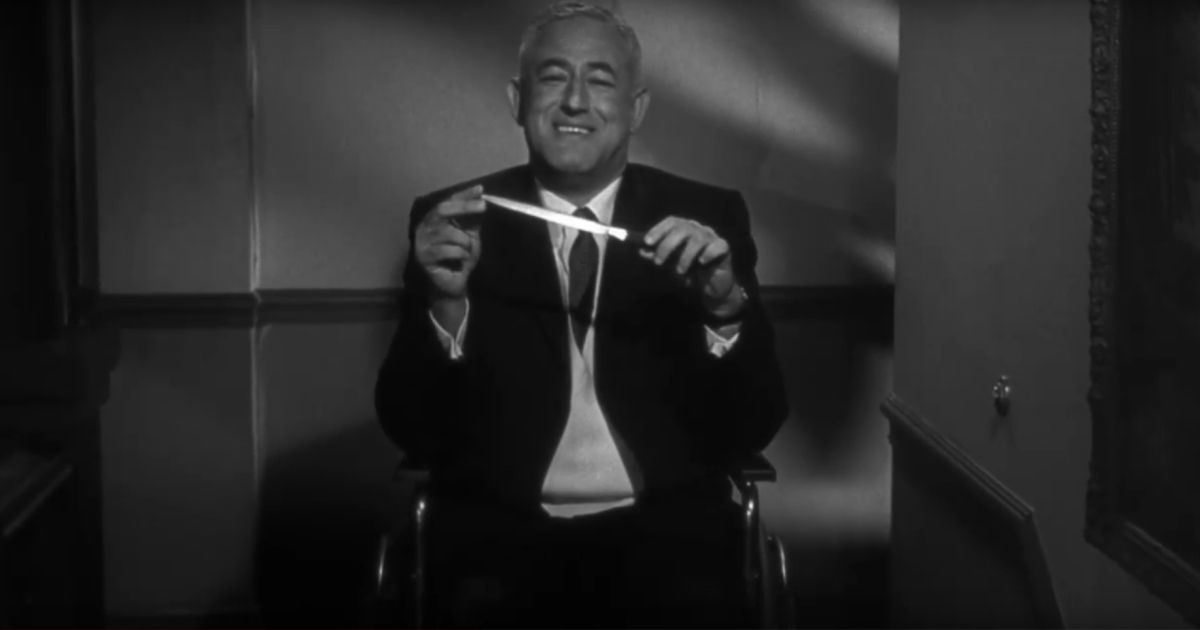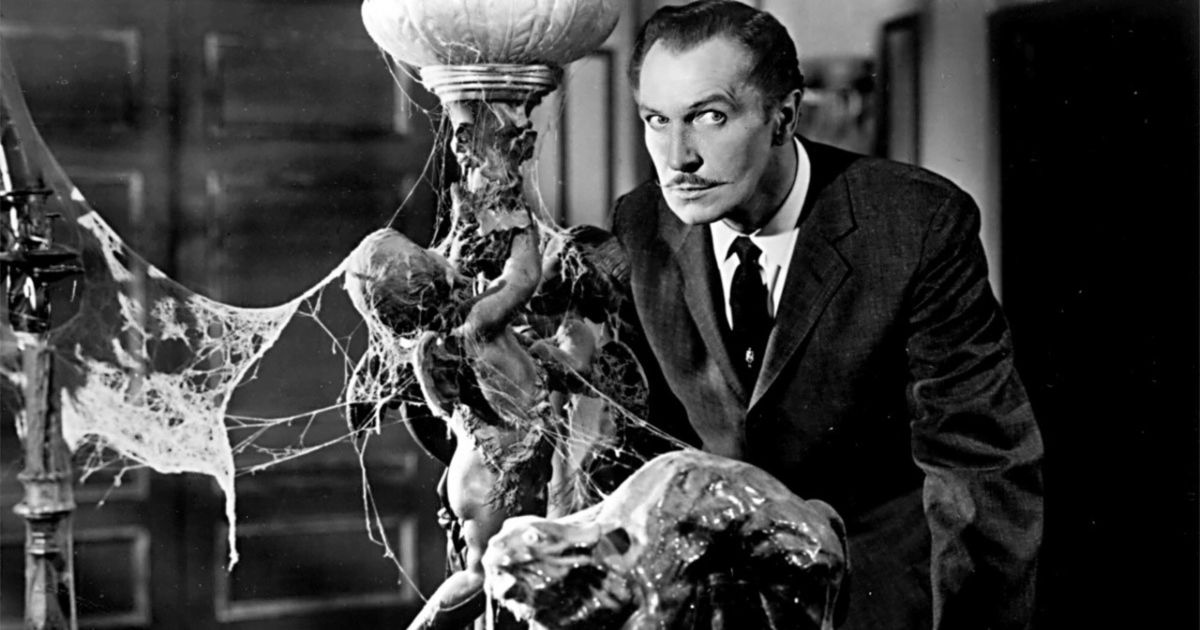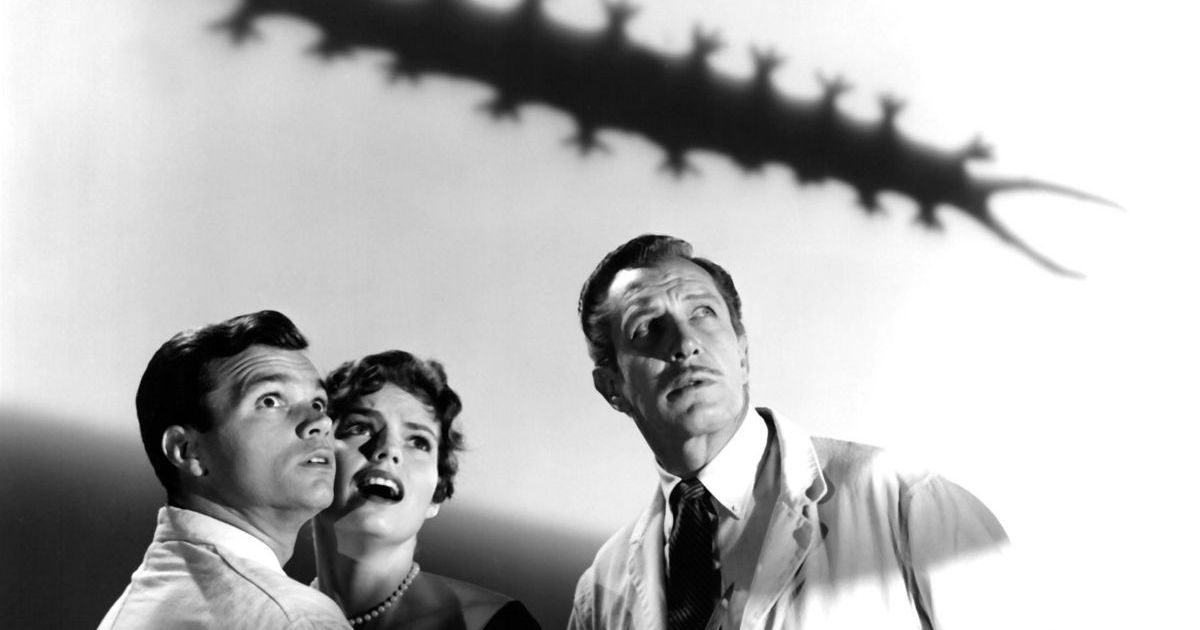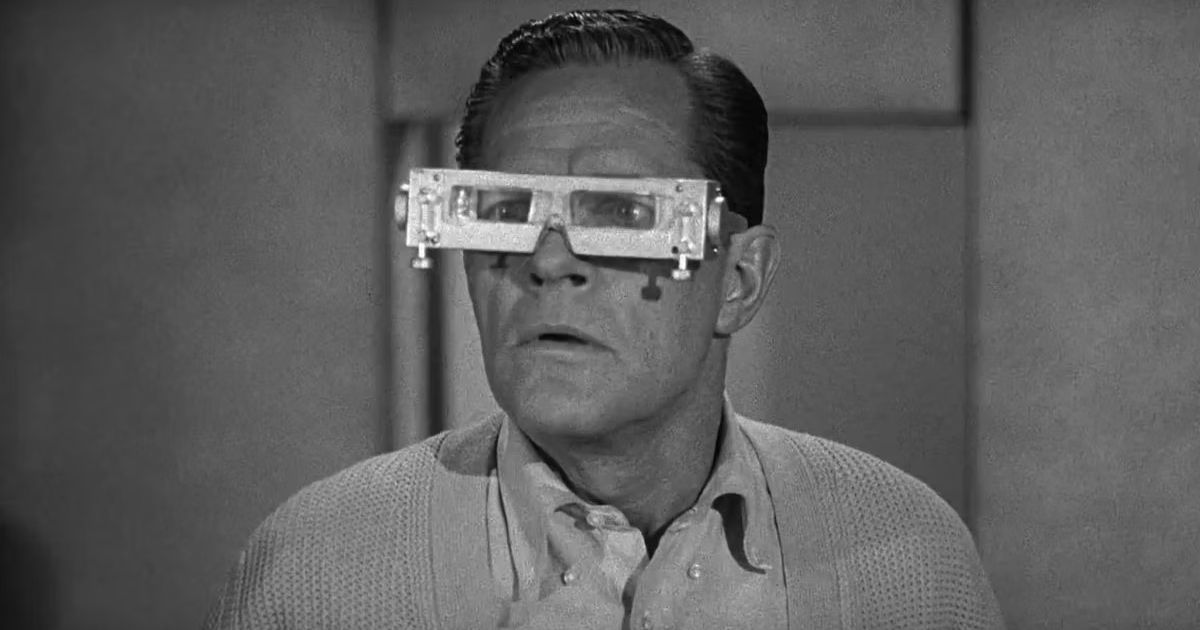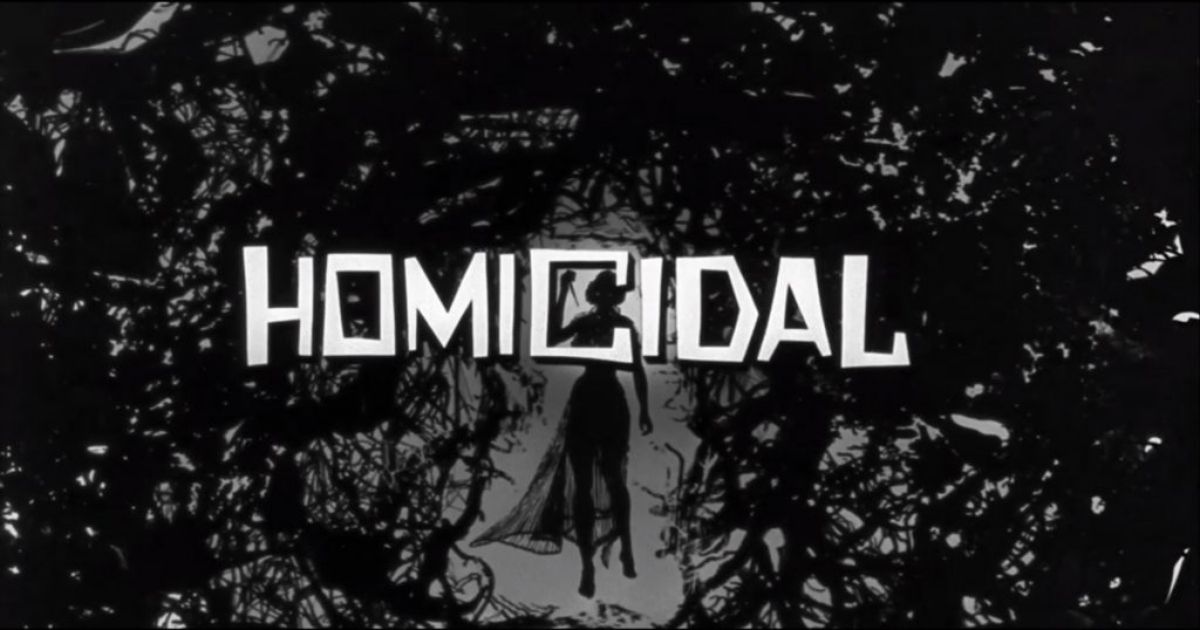Over the years, we’ve all grown acquainted with the fun lengths a studio will go to market a horror movie. Just last year, two the genre’s biggest releases — Smile and Scream (2022) — utilized creative marketing campaigns that momentarily brought the worlds of the films to our own. While viral marketing on this level is most definitely thanks to the visionary campaign for The Blair Witch Project, none of it would be possible without the work of genre giant William Castle.
Castle, director of such B-movie classics as House on Haunted Hill and 13 Ghosts, was an innovator in film promotion and theatrical immersion. Castle promised not just a movie, but an experience. These films weren’t restricted to the screen, and audiences felt the movies in ways they never had before. The director left an indelible mark on cinema, inspiring filmmakers like John Waters, Joe Dante, and Robert Zemeckis.
But Castle had more to offer the art of cinema than cheap gimmicks and good marketing. He had an eye for stories and images that would capture wide audiences, and he knew how to do it on a tight budget. While it’s the latter that he’s most remembered for, Castle left another mark on the horror genre that is equally if not more important when he produced Rosemary’s Baby.
William Castle Promises a Good Scare
A young Castle quickly made a name for himself in Hollywood as the guy that could make B-movies under budget and ahead of schedule. His first film as an independent creator, Macabre, also featured Castle’s first promotional gimmick. Ads claimed that the film was so terrifying, the producers promised insurance for $1,000 in the case of death by fright. When audiences arrived at the theater, they did indeed receive the promised beneficiary agreement that would pay out to whomever the deceased named. Unsurprisingly, none of these ended up getting paid out, but the film was a hit regardless.
Next, Castle directed the B-movie classic House on Haunted Hill starring Vincent Price. The film used what Castle named “Emergo” to immerse viewers. During a late scene, a plastic skeleton would fly over the audience provoking shock and laughter. While we no longer get the joy of experiencing “Emergo” at its finest, the film does more than enough to stand on its own between its campy acting and eerie imagery. House on Haunted Hill was remade in 1999 with the same name and is a blend of Castle’s initial story and a particularly late-90s brand of camp.
William Castle Puts Audiences in Movies
Castle released another film in the same year, The Tingler, and this had a gimmick to outdo the last — "Percepto." As audiences arrived in the theater, they would find “nurses” stationed around the lobby and an empty ambulance outside. Some of the theater seats were rigged with vibrating motors that would activate towards the end of the film when Price, as protagonist Dr. Warren Chapin, frantically warned the audience that the titular monster had escaped into the movie theater itself. At the same time, audiences were seeded with actors to make a spectacle of their fear. These actors would dramatically scream and even pretend to faint before being brought out to the waiting ambulance on a gurney.
What makes “Percepto” so incredibly fun, though, is the way in which it ties into the movie itself. In the movie, fear is the thing that the Tingler feeds on, and the only way to fight it off is to scream. Between the vibrating seats, Price’s narration, and the underlying understanding that screaming was essential to the experience, audiences were invited for a brief moment to imagine that the world of the film and their own were one.
13 Ghosts came out the next year featuring a scaled-down gimmick Castle called “Illusion-O.” Audience members were given a viewing device through which they were ostensibly able to choose whether they would see the film’s promised ghosts or not. The device worked similarly to the classic red and blue 3-D glasses we’re used to, featuring red and blue cellophane to enhance or erase images in the film. To achieve the effect, the black and white footage in 13 Ghosts had a blue filter applied to it, while the film’s ghosts were run through a red filter and superimposed over the original footage.
As with The Tingler, Castle used Illusion-O to bring audiences into the film. In 13 Ghosts, the characters use spectral viewers that reveal ghosts in their vision just like the Illusion-O specs. The spectral viewers would also make a prominent return in the Dark Castle remake Thirteen Ghosts, though audiences in 2001 didn’t get their own this time.
The Gimmicks Get Stale
Castle’s next gimmick would be further scaled down, this time in the form of the “Fright Break” in the film Homicidal. During the film’s climax, the audience would have a 45-second break in which they were advised they could leave the theater and request a full refund if they were too scared. Castle tried to make this policy fool-proof against abuse, but a small portion of the audience still tried. To stave off would-be scammers, Castle implemented the “Coward’s Corner” meant to shame any audience member who decided they would take advantage of the Fright Break. At the time, Homicidal was looked down upon as a poor imitation of Psycho, but modern audiences often consider it one of Castle’s best films for its pacing and suspense.
Castle’s next several films would all feature gimmicks that paled in comparison to those earlier movies. For Mr. Sardonicus, audiences used a voting system to choose if the protagonist lives or dies. Castle claimed there were two endings filmed in the case that audiences chose the “merciful” ending, but no evidence of that ending exists. Other movies would incorporate souvenirs, such as the “magic” gold coins for Zots! and the cardboard axes for Straight-Jacket.
William Castle Changes Horror Movies Forever
Castle’s gimmicks weren’t what they used to be, but that didn’t mean that he was done leaving his mark on cinema. It was Castle who first read a galley copy of Ira Levin’s novel Rosemary’s Baby and purchased the film rights by mortgaging his home. He brought the novel and the rights to Paramount’s Robert Evans, and soon, history would be made. While Castle didn’t get to direct the film as he’d wanted, he did play a vital role in bringing Levin’s vision to screen.
Rosemary’s Baby is a widely recognized turning point in the horror genre. This was “prestige” horror before that was a thing, and modern genre giants like Jordan Peele, Ari Aster, and Ti West are just some of the innumerable crowd of creatives that have found inspiration in the film. Indeed, the landscape of modern horror cinema would look a lot different if not for the work of the “Abominable Showman” William Castle.

